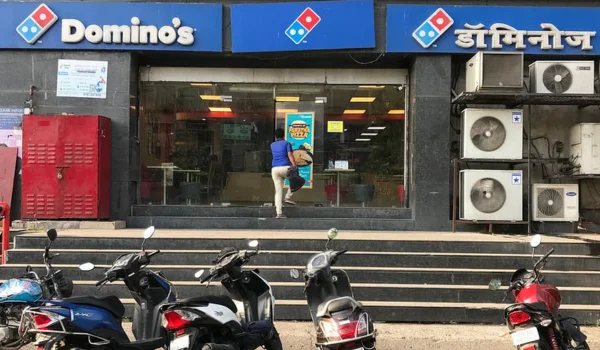The fast-food industry in India has witnessed tremendous growth over the past decade, driven by rapid urbanization, changing lifestyles, and increasing disposable incomes. Among the key players in the quick-service restaurant (QSR) segment is Domino’s Pizza, a global brand synonymous with delicious pizzas and efficient delivery services. In India, Domino’s holds a dominant market position with the largest share in the organized pizza segment.
For entrepreneurs looking to invest in a stable and profitable business, a Domino’s franchise in India presents an attractive opportunity. However, understanding the Domino’s franchise cost in India, along with other crucial aspects like eligibility, application process, and profitability, is essential before making an investment decision. This article provides an in-depth overview of all these factors.
Why Invest in a Domino’s Franchise in India?
Domino’s has become a household name in India, thanks to its prompt delivery services, affordable pricing, and localized menu options. The brand is managed by Jubilant FoodWorks Limited, which holds the master franchise rights for Domino’s Pizza in India, Bangladesh, Sri Lanka, and Nepal.
Here are some compelling reasons to invest in a Domino’s franchise in India:
- Market Leader: Domino’s holds more than 70% of the market share in the organized pizza segment in India.
- High Brand Recognition: The strong brand presence ensures customer trust and steady footfall.
- Growing Demand for Fast Food: India’s QSR market is projected to grow at a CAGR of 18% between 2021 and 2025.
- Proven Business Model: Domino’s robust operational systems and consistent product quality make it a reliable investment.
- Strong Delivery Network: Domino’s is known for its efficient delivery model, which aligns with India’s growing preference for home-delivered food.
Types of Domino’s Franchise Models in India
Domino’s offers multiple franchise models in India to suit different business needs and investment capacities:
1. Traditional Stores:
- These are full-service dine-in and takeaway outlets located in high-traffic areas like malls, high streets, and commercial hubs.
- They require higher investments but offer greater revenue potential due to higher footfall.
2. Non-Traditional Stores:
- Outlets located in airports, railway stations, college campuses, and food courts.
- These stores have lower setup costs and cater to on-the-go customers.
3. Delivery and Carryout Stores:
- Focus primarily on delivery and takeaway services, catering to the increasing demand for home-delivered food.
- These stores require lower investment and operational costs compared to dine-in outlets.
The choice of franchise model plays a crucial role in determining the overall investment and profitability.
Domino’s Franchise Cost in India: Investment Breakdown

The cost of a Domino’s franchise in India varies depending on the chosen franchise model, location, and store size. On average, the initial investment ranges between ₹65 lakh to ₹2 crore. Here’s a detailed breakdown:
1. Franchise Fee:
- The franchise fee for a Domino’s outlet in India typically ranges from ₹25 lakh to ₹50 lakh, depending on the type and location of the store.
- This fee grants the franchisee the right to operate under the Domino’s brand and access its operational systems.
2. Store Setup and Construction Costs:
- The setup cost includes expenses related to interior design, kitchen equipment, furnishings, and signage. These costs can range between ₹35 lakh to ₹75 lakh, depending on the store size and location.
3. Working Capital:
- Franchisees need to allocate ₹15 lakh to ₹30 lakh for working capital, which covers expenses such as staff salaries, utility bills, and raw materials.
4. Royalty Fees:
- Domino’s charges a royalty fee of 5.5% of the gross sales, which covers brand support, operational guidance, and ongoing innovations.
5. Marketing and Advertising Costs:
- Franchisees are required to contribute 2% to 3% of gross sales towards national and regional marketing campaigns.
Eligibility Criteria for Owning a Domino’s Franchise in India
Domino’s follows a stringent selection process to ensure that its franchisees can maintain the brand’s global standards. The key eligibility criteria include:
Financial Capability:
- Applicants must demonstrate a net worth of at least ₹1 crore and the ability to invest ₹65 lakh to ₹2 crore in the business.
Business Acumen:
- While prior experience in the food and beverage sector is preferred, it is not mandatory. However, candidates must have sound business management skills.
Operational Commitment:
- Domino’s expects franchisees to be actively involved in the daily operations of the store to ensure smooth functioning.
Location Requirements:
- The proposed location must meet Domino’s strategic requirements in terms of accessibility, visibility, and customer potential.
Steps to Apply for a Domino’s Franchise in India
To apply for a Domino’s franchise in India, follow these steps:
1. Research and Feasibility Study:
- Conduct a thorough market analysis to determine the best location and franchise model based on customer preferences and competition.
2. Submit the Application:
- Prospective franchisees can apply through the official Jubilant FoodWorks website, providing necessary details regarding financial background and business experience.
3. Evaluation and Interview Process:
- Domino’s evaluates the application and conducts interviews to assess the applicant’s financial capability, operational skills, and strategic vision.
4. Location Finalization:
- The franchisor inspects the proposed location to ensure alignment with Domino’s expansion plans and customer demographics.
5. Signing the Franchise Agreement:
- After approval, the franchisee signs a detailed agreement that outlines operational standards, revenue-sharing terms, and brand compliance obligations.
6. Training and Store Setup:
- Domino’s provides extensive training programs for the franchisee and staff, covering areas like store management, customer service, and food safety.
Profitability and Return on Investment (ROI)
Domino’s franchises in India offer attractive returns due to the brand’s strong market presence and customer loyalty. The key profitability indicators include:
Annual Revenue:
- Successful Domino’s outlets in India can generate ₹1 crore to ₹4 crore in annual revenue, depending on location and customer footfall.
Net Profit Margins:
- Profit margins typically range from 15% to 20%, depending on operational efficiency and cost management.
Break-even Period:
- Franchisees can expect to break even within 2 to 3 years, depending on the performance of the store and market conditions.
Challenges of Owning a Domino’s Franchise in India
While owning a Domino’s franchise can be highly rewarding, it also comes with certain challenges:
High Initial Investment:
- The initial investment is relatively high, which may be a barrier for small investors.
Operational Rigor:
- Franchisees must adhere to strict quality, hygiene, and customer service standards to maintain brand reputation.
Intense Competition:
- The QSR market in India is highly competitive, with brands like Pizza Hut, Papa John’s, and local pizza chains competing for market share.
Conclusion
Investing in a Domino’s franchise in India is a lucrative opportunity for entrepreneurs who have the financial resources and operational expertise to manage a fast-paced business. With its strong brand presence, customer-centric approach, and growing demand for fast-food options, Domino’s offers a sustainable and profitable business model.
However, prospective franchisees must be prepared for the high initial investment and rigorous operational standards required to succeed. For those who meet the eligibility criteria and are willing to commit to the day-to-day operations, owning a Domino’s franchise can be a pathway to long-term profitability and growth in India’s booming QSR industry.

Shashi Kant is the Founder and Editor of BusinessScroller.com, a leading platform for business insights, finance trends, and industry analysis. With a passion for journalism and expertise in business reporting, he curates well-researched content on market strategies, startups, and corporate success stories. His vision is to provide valuable information that empowers entrepreneurs and professionals. Under his leadership, BusinessScroller.com has grown into a trusted source for in-depth articles, customer care guides, and financial expertise.


